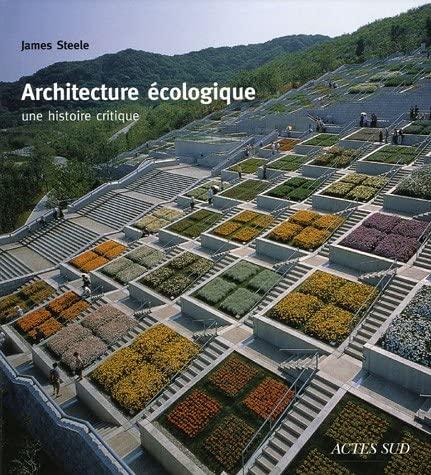Ecological architecture
0,00 €
| Language of origin | |
|---|---|
| Publication date | |
| Infos : | 22.80 x 25.40 cm |
A critical history
Throughout the 20th century, architects have constantly reacted to the consequences of the industrial revolution by bringing into the field of their research and work new themes and processes which had in common to respond to objectives that had become imperative: the improvement of the balance between man and his urban environment, the protection and enhancement of natural spaces.
Thus, this architectural ecology has endeavoured to propose alternatives for :
– adapting urban architecture to the demographic growth of the post-industrial era ;
– better manage the uncontrollable expansion of cities and their outskirts, which was done to the detriment of natural areas
– promote energy savings made necessary by the oil crises and water shortages;
– to participate in the fight against pollution of all kinds;
– restore and rehabilitate industrial wastelands or damaged natural sites;
– contribute to sustainable development by favouring traditional and local materials, production methods and know-how;
– respecting current environmental standards, or even contributing to their definition;
– create harmonious, aesthetic and comfortable living spaces that reconcile people with their habitat.
Among the many architects today committed to the defence of a more ecological habitat and a better protected nature, some turn to the visionaries of the last century – whose “eccentricities” are now considered models – while others propose, not without provocation, ingenious combinations of new technologies and avant-garde experiments.
The history of this gradual integration of environmental issues into the habitat is retraced in this Ecological Architecture, a valuable tool for practitioners and students of architecture, but also for all those concerned with the future of our planet.
After defining ecological architecture and its many fields of application in the areas of tradition, technology and urban planning, James Steele organises his study in three stages:
– he identifies the key themes of ecological architecture – sustainable development, energy saving, harmonious integration into the site, etc. – and examines the relationships between them. – He identifies the key themes of ecological architecture – sustainable development, energy saving, harmonious integration into the site, etc. – and examines the relationship between traditional know-how and the most modern technologies;
– It traces the history of the main architects and movements that led to this ecological revolution and studies their major achievements. The presence of Le Corbusier, Buckminster Fuller and Rudolf Schindler, for example, reminds us that the modern movement, while still marked by a very absolute belief in the benefits of scientific progress, also played an important role in the birth of ecological architecture. He also introduces us to the works of Charles Rennie Mackintosh, Ebenezer Howard, Frank Lloyd Wright, Hassan Fathy, Balkrishna Doshi, Louis Kahn, Richard Rogers, Norman Foster, Michael Hopkins, Nicholas Grimshaw, Paolo Soleri, Malcolm Wells, James Turrell, Edward Mazria, Ian McHarg, Frei Otto, Fentress Bradburn, Kenneth Yeang, Jimmy Lim, Rasem Badran, Abdel Wahed El Wakil, Enric Mirrales, Tadao Ando, etc.
– Finally, by analysing the changing attitudes towards tradition, technology and urbanism, it highlights the present and future role of ecological architecture in global urbanisation.





